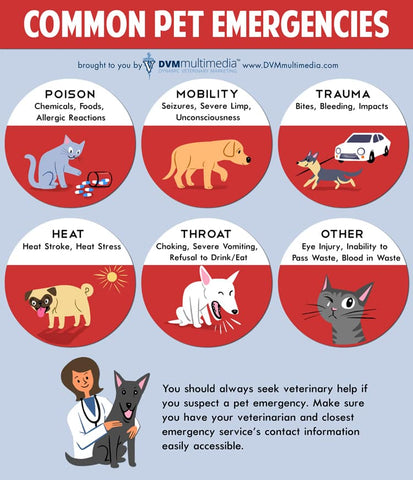In an era where human life is empowered by rapid response mechanisms, the plight of our pets remains a glaring oversight. The establishment of a 911-type emergency service for pets is not merely a fanciful suggestion; it is an imperative evolution in our approach to animal care. As companions and family members, pets deserve immediate, specialized assistance when they encounter medical emergencies. The following discussion will embark on a comprehensive exploration of this topic, detailing the pressing need for such a service, the diverse types of emergencies that could arise, and the potential benefits that a dedicated emergency response system could offer.
One of the fundamental arguments for creating a 911-type emergency service for pets is rooted in the increasing incidence of pet-related emergencies. From accidental poisoning and traumatic injuries to sudden illnesses, the scenarios are both varied and alarming. According to veterinary experts, many pet owners lack the knowledge and preparation required to handle emergencies effectively. A dedicated emergency response service could act as a lifeline, providing immediate guidance and transport to the nearest veterinary facility. The speed with which an emergency is managed can often be the difference between life and death. Each minute lost is a lost opportunity for timely intervention, further magnifying the necessity of an organized service.
Additionally, pet owners often exhibit a high level of emotional distress during moments of crisis, which can cloud judgment and hinder effective decision-making. In such instances, the presence of trained professionals who specialize in animal care could lend both expertise and tranquility to frantic owners. Emergency responders could be equipped with the knowledge to assess the criticality of a situation and to direct owners accordingly, creating a structured communication channel between pet owners and veterinary professionals. This dynamic could alleviate the panic typically associated with emergencies and streamline the care process.
Moreover, a 911-type service could encompass a wide range of scenarios as opposed to just traditional emergencies. For instance, behavioral crises—such as severe aggression, anxiety attacks, or other mental health issues—could be addressed by specialists equipped to manage these unique situations. Just as humans require mental health resources, animals also exhibit psychological distress that necessitates urgent attention. By including behavioral specialists in the emergency response framework, we can foster a more holistic approach to animal welfare.
In addition to addressing immediate emergencies, this service could provide continuous education and resources for preventative care. By employing a holistic model that includes such educational outreach, pets could not only receive help in times of need but also undergo preventative measures designed to avert crises before they arise. Regular workshops on recognizing the symptoms of common health issues, understanding pet behavior, and learning essential first aid techniques are just some potential resources. An informed pet owner is better equipped to prevent emergencies and to manage them should they occur.
Technology, too, could play a pivotal role in enhancing the delivery of emergency services for pets. Mobile applications could be developed that allow pet owners to report emergencies, receive real-time advice, and even track the arrival of emergency responders. Imagine a world where a simple push of a button connects a pet owner in distress with an operator who can guide them through immediate steps before help arrives. Such technological adaptations could refine the response time significantly, optimizing the chances of a positive outcome for distressed animals. Additionally, GPS-enabled tracking could streamline responses by directing the closest responders to the owner’s location, ensuring that assistance is both swift and effective.
Furthermore, the establishment of a 911-type emergency service for pets could lead to the integration of community resources. Partnerships between animal welfare organizations, shelters, and veterinary clinics could create a robust network capable of addressing the multifaceted nature of pet emergencies. This collaboration could bolster resource sharing, ensuring that no matter what the emergency entails, there is a community of specialists ready to pitch in. Such cooperative efforts could lead to public awareness campaigns, where regular training sessions for both community responders and pet owners become the norm, enriching the overall knowledge base surrounding animal care.
In contemplating the socioeconomic implications of such a service, it is essential to address accessibility. Ensuring that economic barriers do not inhibit access to emergency care is crucial. A 911-type emergency service could also provide a tiered response system based on an individual’s capacity to pay. Prioritizing equity in service delivery reinforces the notion that all life holds intrinsic value. The inclusion of government funding and grants can further support a sustainable financial model that emphasizes universal access to emergency services for all pets, irrespective of their owners’ financial constraints.
Critically, the advocacy for an emergency response system for pets symbolizes a broader societal recognition of animal welfare as an integral aspect of contemporary life. It signifies an acknowledgment that pets are companions who deserve compassionate care. By establishing a pet-specific emergency service, society will be making strides towards improving animal welfare practices and reinforcing the value of life—both human and animal. Ultimately, the proposal for a 911-type emergency service for pets prioritizes rapid response, community involvement, and education, paving the way for a future where pets receive the urgent care they unequivocally deserve.
In summary, the establishment of a structured emergency service dedicated to pets is essential for enhancing both the speed and quality of care delivered to animals in distress. The increased efficiency, emotional support, educational outreach, and community collaboration that such a system could engender would substantially improve the landscape of animal care. This initiative is not simply a luxury; it is an urgent necessity in today’s world, reflecting our commitment to the well-being of all creatures that share our lives.






